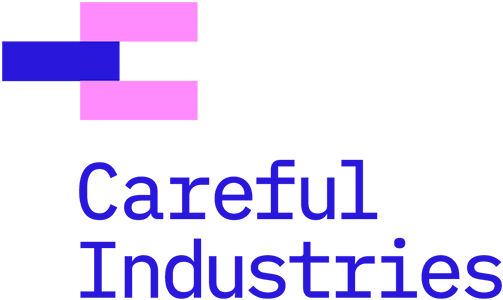Weeknotes 3 - Reflections from our kickoff workshop
This past Thursday, we hosted our first official kickoff workshop for the Foresight Observatory. We are still very early in the project — this week we hit the one month mark! — so having the workshop now was a good test in explaining what we’re trying to do, seeing how our ideas land with others, and getting feedback on what shape(s) the project might take moving forward. About 15 people from different parts of the funding ecosystem joined us to share their experiences using foresight within their institutions, to think about what’s missing, and to give some ideas about how the Observatory might begin to fill in some of these gaps. We split into three groups to allow more opportunity for everyone to share their thoughts and we used Jamboards as a collaborative way to share post-it notes and make the discussion more interactive and engaging.
We started off by discussing ingredients of a good funding strategy. Some things that came up across the groups were: clear values; flexibility / responsiveness to changing circumstances; clarity about scope, outcomes, and expectations; and being contextually specific to individual communities and their needs. We then discussed other foresight activities taking place, which mostly consisted of horizon scanning; in-house data analysis; general research looking at reports and other similar materials; and external interviews and consultations with fundees and others within the civil society sector. From there, we discussed challenges to doing foresight work. One of the most common responses was practical application — how to actually use foresight methods and ideas in a generative way. Another common thread was navigating senior leadership and the scepticism towards doing foresight work because of its higher levels of uncertainty and, therefore, risk. A few other challenges that came up were: access and resources; skills and knowledge about foresight; reviewing and revising practices as needed; being mindful of and tackling how power dynamics show up; and being flexible / malleable to be applicable to different communities and contexts while being specific enough to actually meet communities’ needs in tangible, meaningful ways. The participants had a wide range of experience with using foresight, with some feeling as if our workshop was the most they’d ever thought about foresight and others having used it for years. This helped us think about meeting a wider range of needs in terms of how we structure the project and what outcomes we might consider producing.
Photo by Emily Morter via Unsplash
The second half of the discussion was centred on shaping how the Foresight Observatory might look. Thinking about current and past foresight projects, we started by identifying what’s missing. Common threads here included having more access to data / evidence / and case studies, which could be helpful in “proving” the usefulness of foresight; having more openness regarding what types of data and knowledge are considered valuable; moving beyond ideas to having tangible impact; and community engagement, especially earlier on in the process. Being clear about what we mean by “foresight” and being mindful of historical and current contexts shaping our socio-political landscape were two additional aspects shared. There were a number of themes, questions, and uncertainties that participants have noticed within their own work. Broadly these can be divided into three categories: internal uncertainties, external ones, and uncertainties about foresight itself. The first are internal uncertainties: these centred around diversity and inclusion; working at the national level but engaging people at a local one; and asking how structures are embedded, such as the role of foundations in today’s context. Similarly, they identified external uncertainties: asking how they navigate the current political landscape; and how to build resilience in response to the uncertainty of future crises. Finally, participants identified uncertainty with foresight itself: asking what the process should look like and how to ensure tangible impact given who has historically been engaged in foresight work and the realities of how government policy is developed and implemented.
Of course, these are all big questions that can’t be answered in one 2-hour workshop or even within 6 months. However, having this discussion, especially so early on in the project timeline, gives us some clearer considerations about what a foresight commons might look like and what unintended consequences might arise from practicing collective foresight. Our next steps for the coming weeks are to organise and narrow down which questions we want the Observatory to focus on in this initial phase and how to continue engaging others meaningfully in the process.


